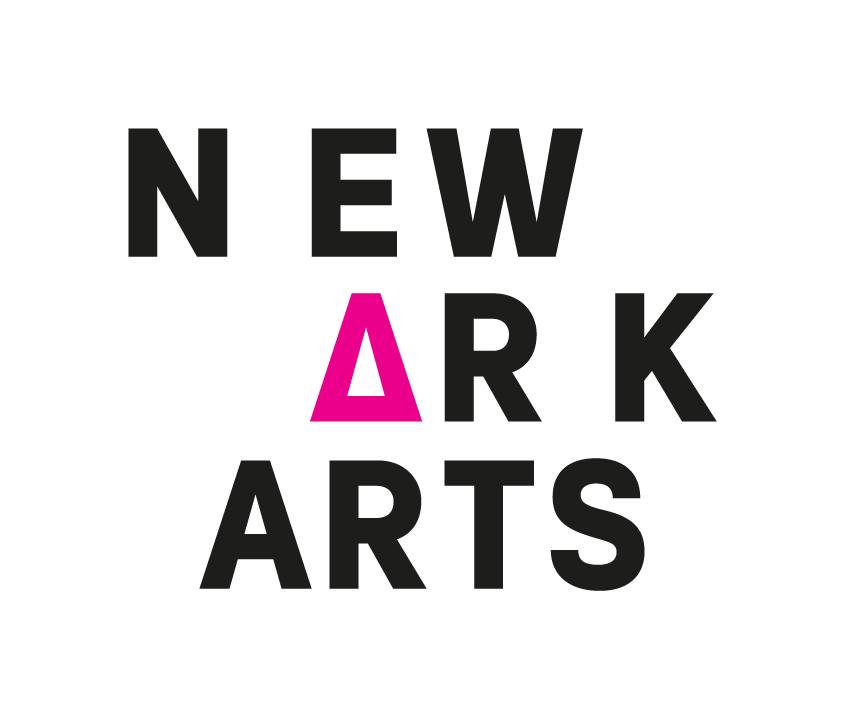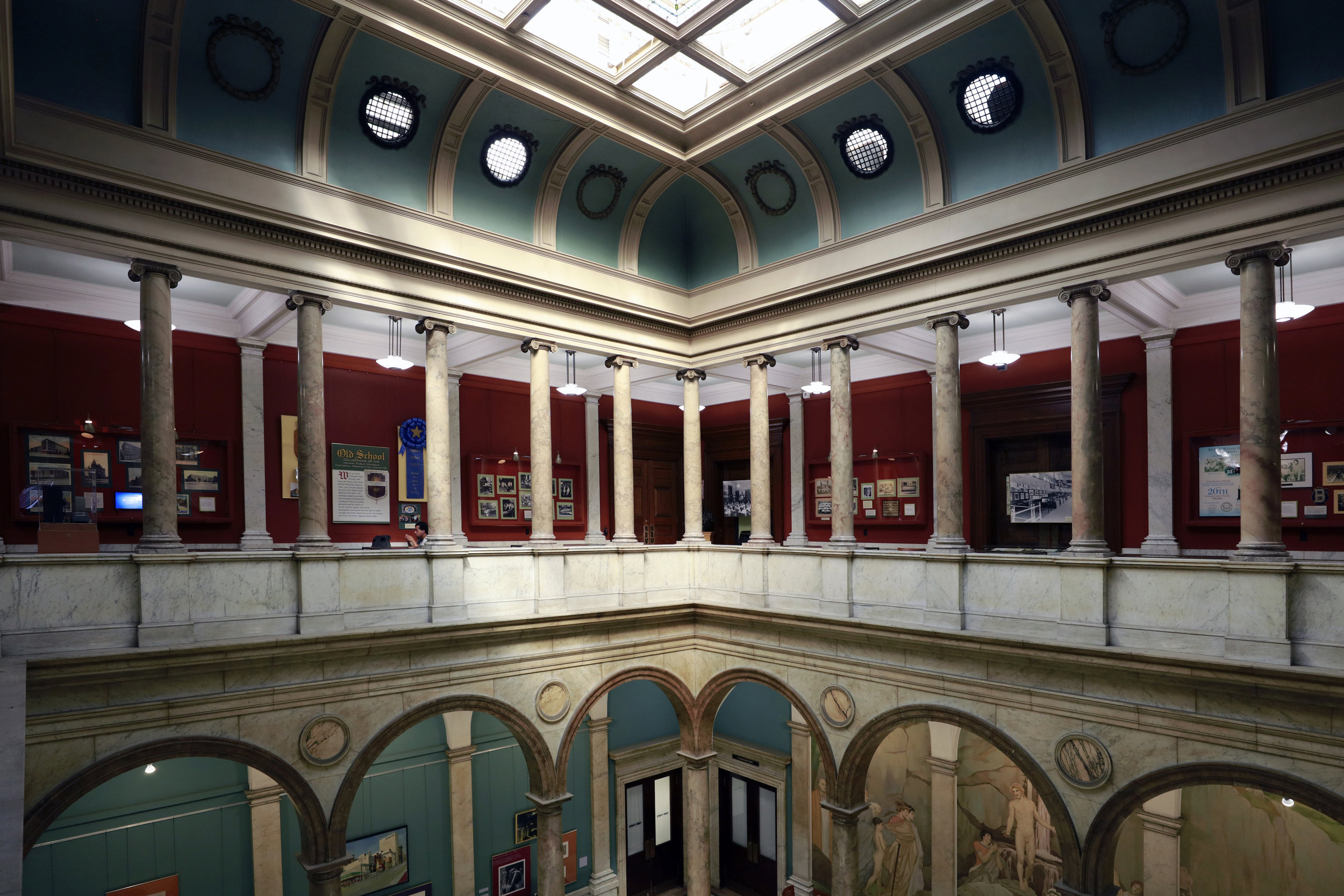THE NEWARK PUBLIC LIBRARY
NPL ON SPECIAL COLLECTIONS, ACCESS & OPPORTUNITY
Main Branch of the Newark Public Library in Downtown Newark | Image Credit: Anthony Alvarez
THE NPL SPECIAL COLLECTIONS HAS AN INCREDIBLY DIVERSE AND UNIQUE ARRAY OF PRINTS AND WORKS ON PAPER. WHAT IS THE OLDEST WORK YOU HAVE?
Actually, the earliest collections are not limited to paper. John Cotton Dana was very interested in the origins of writing, so we own a collection of archaeological specimens, the earliest of which may be Sumerian cuneiform tablets from around 2000 BCE. We do also have some text on papyrus, including fragments of the Egyptian Book of the Dead from 1500 BCE.
WHAT IS THE ACQUISITION PROCESS? HOW YOU DO YOU DETERMINE WHAT WORK TO BRING INTO THE COLLECTION?
Materials are acquired via donations, bequests, and purchases. Fortunately, we have developed rewarding relationships with dealers, artists, and collectors and this has enabled us to add valuable works which we may not have been able to afford. Additionally, works are acquired by searching upcoming auctions, contacting dealers, attending the annual Print Fair in New York, and by visiting local venues such as Gallery Aferro and the Newark Print Shop.
CAN YOU GIVE US A FEW SIGNIFICANT HIGHLIGHTS FROM THE FOLLOWING THREE COLLECTIONS: THE ISLAMIC AND ORIENTAL MANUSCRIPTS, THE BARACK OBAMA ELECTION AND INAUGURATION COLLECTION, AND THE WILLIAM J. DANE COLLECTION?
The Islamic Manuscripts Collection contains many intricate works, including a Qu’ran from 1120 AD which contains beautiful calligraphy and gold ornamentation. We could not omit mentioning the Burmese olas (written on palm leaves) or the Chinese miniature manuscript which colorfully depicts a Buddhist ceremony on a leaf from the Bodhi, or sacred wild fig, tree.
The Barack Obama collection was created in order to document this event and consists mostly of clippings and commemorative editions of Time and Newsweek. The William J. Dane Fine Prints Collection contains over 25,000 works on paper, so it is challenging to select even a few treasures to highlight. The collection includes works by artists over the last several centuries, including art by Warhol and Picasso, a very rare ambrotype of Abraham Lincoln from 1860, hundreds of Japanese prints from 1780 to the present, and a remarkable collection of prints from Puerto Rico by noted artists such as Lorenzo Homar, Rafael Tufiño, Antonio Martorell, Luis Cajiga, and Nelson Sambolín.
TELL US A BIT ABOUT WHY A LIBRARY, WHICH PEOPLE TRADITIONALLY ASSOCIATE WITH READING AND BOOKS, IS AN IMPORTANT PLACE FOR VISUAL ARTS DIALOGUE.
Beginning in 1902, a year after the Main Library opened, its second director, John Cotton Dana, began purchasing and displaying paintings, drawings, and decorative objects in order to stimulate interest in the arts. He soon created a picture collection, which grew to thousands of images and reproductions of artwork which could be borrowed. That collection primarily served educators. This still wasn’t enough and Dana created a circulating print collection. The catch was that you needed to bring your own frame and if it was approved, you could borrow artwork to display in your home. Dana also organized exhibits, some of which were on loan and were displayed very briefly, sometimes only for a fortnight (two weeks) and there was always something interesting on display for Newarkers to admire. We just do not have the capacity to change our exhibits as frequently today. However, we continue to research the art market, we try to stay well-informed of up-and-coming artists (especially local artists), and we continually host tours and classes from Rutgers-Newark, NJIT, and other schools. It is important for Newarkers to be aware that our collection was founded as a study collection—these works are accessible and will be shown to anyone. We just ask that you make an appointment by sending an email to specialcollections@npl.org.
TECHNOLOGY HAS CHANGED A LOT OF HOW PEOPLE ENGAGE WITH LIBRARIES: WHAT ARE SOME OF THE WAYS THAT THE NPL USES TECHNOLOGY TO ITS ADVANTAGE WITHIN THE CONTEXT OF SHARING IT’S SPECIAL COLLECTIONS AND PROGRAMS.
A recent grant, which was primarily intended to make archival Newark-related collections from our Charles F. Cummings New Jersey Information Center and our New Jersey Hispanic Research and Information Center more accessible, has enabled the Special Collections Department to digitize a small portion of its holdings because we now have a content management system in place. An intern scanned three collections (Medieval Manuscripts, Islamic Manuscripts, and the Edward Colonna Collection) and other available materials include a small selection of Newark iconography from the William J. Dane Fine Prints Collection and John Cotton Dana’s scrapbook from 1909-1918 which contains information about all the many and interesting exhibits that were held at the Library. Moving forward, we hope to keep adding to our online archive, digital.npl.org. Lastly, the Special Collections Department tries to reach and educate a wider audience about its noteworthy collections via social media, where works are featured at least once a week, if not more often.
WHAT ARE SOME EXCITING VISUAL ARTS RELATED PROGRAMS THAT WE CAN EXPECT IN THE NEAR FUTURE?
In terms of exhibitions, we are working on a joint exhibit with the Newark Museum which will commemorate our anniversaries (130 years of NPL and 110 years of the Newark Museum). This show will open in mid-January here at the Main Library. Later in 2019, the Library will host the 85th Annual exhibition of the Society of American Graphic Artists (SAGA). We are also in the process of collaborating with art faculty at Rutgers on upcoming programs, but those details have not been finalized.

